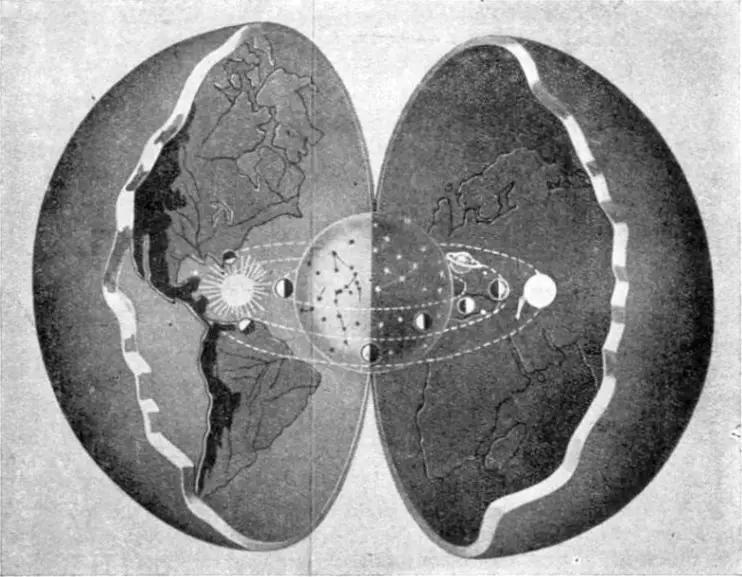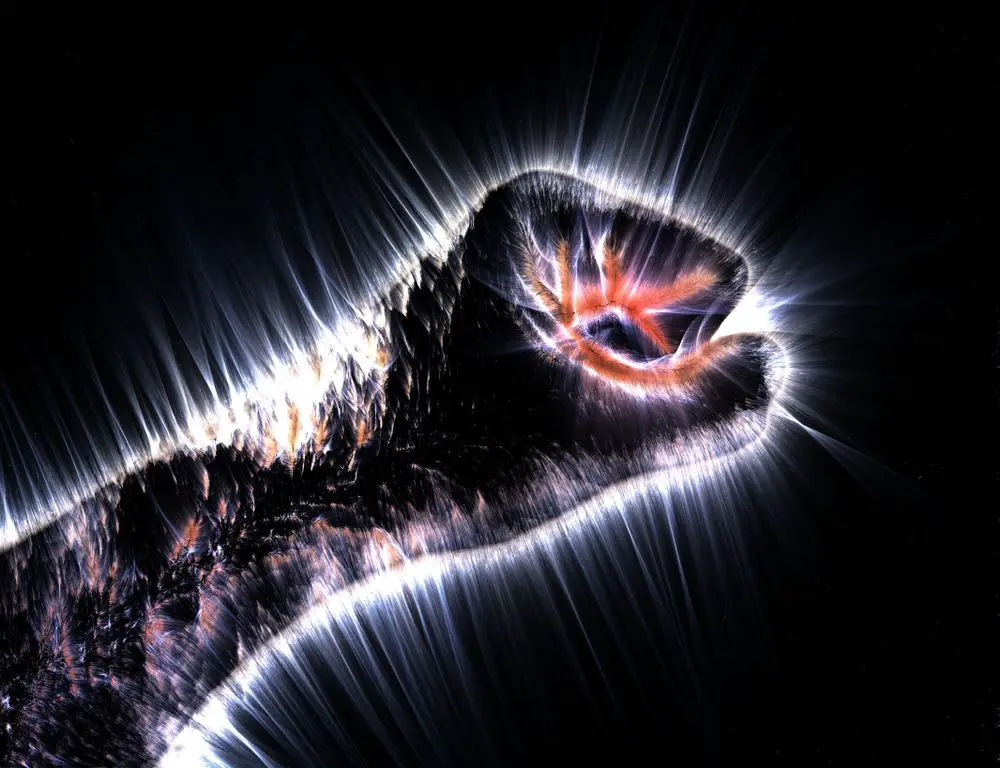Before reading this article, I would like to state that I am only presenting this theory, this isn’t an argument for or against its veracity.
 sometimes see our world with different eyes based on the knowledge that we have. If a child is born with no knowledge of Earth and indoctrinated that our planet is flat they have no reason to doubt their parent or mentor. Our curiosity is what drives us towards education from a very young age, not only to our origins but also to this rock that we have been given life on.
sometimes see our world with different eyes based on the knowledge that we have. If a child is born with no knowledge of Earth and indoctrinated that our planet is flat they have no reason to doubt their parent or mentor. Our curiosity is what drives us towards education from a very young age, not only to our origins but also to this rock that we have been given life on.
Based on the historical notes from early researchers and explorers of this Earth, we have accumulated knowledge that allows us to acknowledge the size, shape, and resources available on our home rock, but when it comes to the core of the Earth, we don’t have any questions as we think that besides thousands of kilometers of bedrock and some very hot magma, there is nothing of interest. So, why wonder right?
Well, this is because, over the last two centuries, the modern era of exploration, not that many people ventured towards exploring the corners of the world that are still left in the shade and which may be drawn on the map just to fill the empty space, but truly there may be nothing there or something we are not yet aware of.
This is because exploring takes not only a lot of time and resources, but it’s quite a risky business, hence why only a few come back.
We are already proceeding to colonize Mars whilst there are many undiscovered places on Earth or places that have been lost in time. We don’t know what lies at the bottom of oceans and the deepest hole we dug in the crust of our earth is only 12.2 kilometers deep. Therefore there are still a lot of unknowns.
The hollow Earth theory and its origin
For many years, people didn’t really wonder that much about what is within Earth and this is because they always had bigger problems on their hands such as wars, famine, or pandemics. The wonder was brought by early geologists but it never reached public attention.
It was not until the late 19th century that this wonder reached public attention and it did not only reach the support of the public but even the support of scientists, politicians, and world leaders.

The idea behind the theory is that the Earth is actually hollow inside and that it encapsulates more land and water with a separate ecosystem sustained by the Sun represented as the core of the Earth. The Earth’s crust or bedrock of 2,400 kilometers (1,500 miles) is what separates what has been described as a separate civilization from us which lives outside the crust.

The origin of the theory was fueled by the famous novel Journey to the Centre of the Earth by Jules Verne, published in 1864. The novel was originally published in French, but it quickly got translated into different languages and distributed all over the world. The book got so much attention that in 1867 Jules Verne published another version that expanded on the detail of the center of the Earth.
The novel’s story represents a team of explorers who go down into a volcanic creature towards the center of the Earth through the South Pole. After 2 months the exploration team finally reaches the core of the Earth where they discover a whole new civilization powered by their own Sun. This civilization was as advanced as our own world in the 19th century, with a great emphasis on infrastructure.
Mediatization of “a new discovery”
This is where the problems started, as the book got more and more popular some people actually took this book not as a novel, but as if it was actually stating the findings of new discovery (remember this was back in the 1870s). This also attracted the attention of different scientists that were inspired by the novel to actually believe that this theory could be true.
Many writers have started a mediatization campaign of this “new discovery” to the rest of the world, just like how social media today misinforms the masses, but a lot slower.
The first evidence of this was seen published in the late 19th century by a researcher within the field of Geography. The book is entitled Physical Geography written by Arnoldo de Azevedo who writes about a mysterious world beneath our own feet with the argument that scientists at the time knew nothing about what is five miles beneath their feet.
The author goes over saying that scientists only come up with theories and hypotheses to entertain the world without having any hard evidence and allowing the reputation of scientists to define the reliability of any theory. Based on 19th-century scientific standards it is pretty true.
“We have below our feet an immense region whose radius is 6,290 kilometers, which is completely unknown, challenging the conceit and competence of scientists.” (Quote taken from Physical Geography by Arnoldo de Azevedo)
Azevedo also came up with his own scientific hypothesis behind the theory. When the Earth was still forming as a planet, most of the Earth was just soft lava and due to this the centrifugal speed at which the planet was spinning forced the lava from the center or core of the Earth to settle on the side, therefore making the Earth hollow. Due to lower centrifugal force at the two poles of the Earth, holes to the hollow center have also formed.
Believe it or not, there is actually a calculation that supports this theory. The total size of our planet’s surface is 431.5 million kilometers squared which should give a weight six times bigger than the actual weight of the Earth which is 5.972 × 10²⁴ kg. This means that the Earth is not necessarily hollow (although it can be a logical explanation), but for some reason, our planet is a lot lighter.

What is even more interesting is that the 19th century isn’t actually the first time this theory was mentioned as a possible scientific theory. The first mention of this theory was done in 1692 by Edmond Halley, a researcher in astrology and mathematics from the University of Oxford who put forward the idea that Earth has different size hollow shells inside, just as presented in this image.
If we were to go even further in history we would see mentions of similar theories of the Earth being Hollow, although the reference and ideologies are very vague, with, of course, Greek scholars being the first to think of it.
Going back to the 19th century, after the publication of Azevedo’s work there have been a large number of scholars who came up with support for this theory, or very similar variants to the theory itself.
Looking for the holes in the Poles

Where it gets really interesting is in the 20th century with the book The Hollow Earth by Doctor Raymond Bernard (also known as Walter Siegmeister) who was a very popular writer, but also very controversial and this book is one of the main reasons. In the book, Bernard talks about the expeditions held by Richard Evelyn Byrd From the Artic in 1947 and Antarctica in 1956.

Byrd and the rest of his team found the interior concavity that leads to the hollow center of the Earth. The North Pole with a distance of 2,700 kilometers until the scope of the inner land and the South Pole with a distance of 3,700 kilometers. The land inside hollow Earth is quite tropical and filled with a civilization that is 10 times more advanced than ours.
In the book, there is also a reference to all this in another book that debates these two holes from each of the poles towards the center of the Earth. The book is entitled Worlds Beyond the Poles by Amadeo Giannini, published in 1959. It is amazing how many books have been published on this matter, and these are the most popular ones, not taking into consideration the thousands of others lost in time.
International support
During the early 20th century the theory really got the attention of scholars from various fields. A group of Russian scientists discovered that the magnetic North Pole isn’t represented by a single spot, but by a line that is almost 1,500 kilometers long which goes over the polar river up until the Taimir Peninsula from Siberia.
Based on this hypothesis, this represents the edge of the polar concavity and any on the edge of the magnetic pole can be called the Magnetic North Pole because on this edge any compass would point to the North, no matter the position of the compass. Science isn’t able to explain this phenomenon and blames it on the particles that are electrically charged by the Sun.
Even German Scientists before the Second World War had researched this theory but sadly all the research papers have been lost or destroyed during the war.
Since the middle of the 20th century, there have been smaller writers publishing about this theory, but around the 1970s when the scientific revolution took place, the interest in this theory was lost. It is interesting to see how many papers have been published disregarding the theory, yet we still only base our belief that the world is not hollow on calculations that for some reason don’t add up.
Is it all a big lie supported by scientists and writers seeking attention? I will let you be the judge of that.
Avid Writer with invaluable knowledge of Humanity!
Upcoming historian with over 30 million views online.
“You make your own life.”





